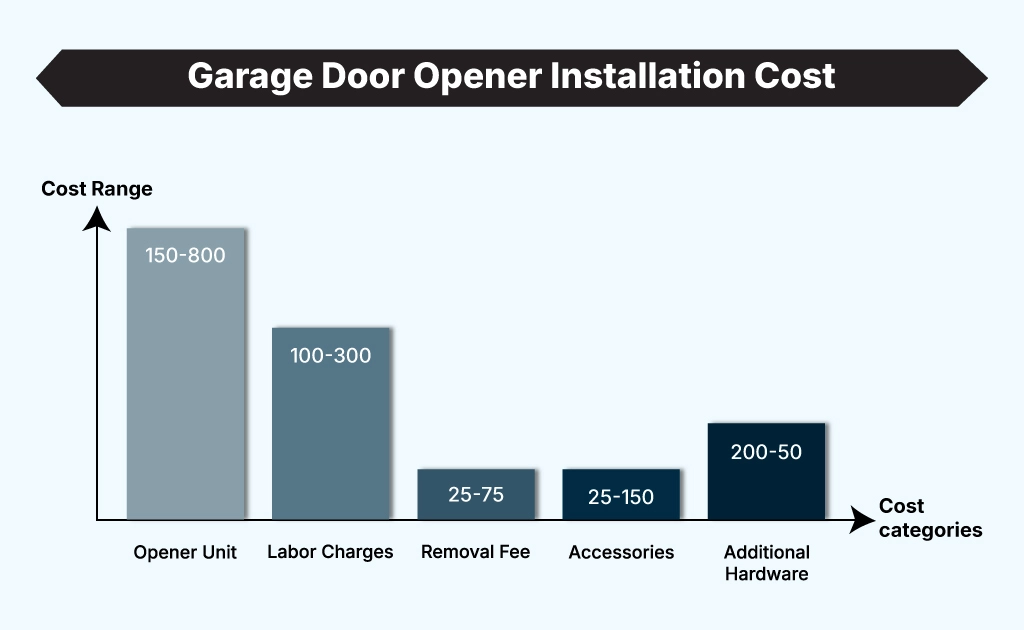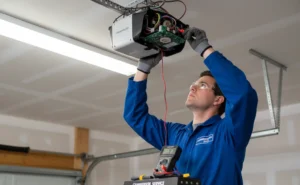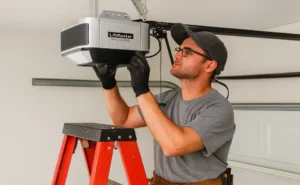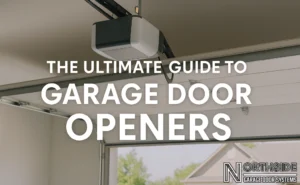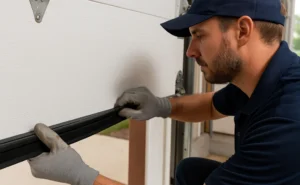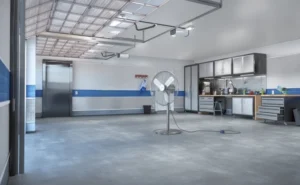If you’re like most homeowners, you probably don’t think much about your garage door opener until it stops working. Then suddenly, you’re scrambling to figure out what it’ll cost to get back to the convenience of pushing a button and watching your garage door glide open. The garage door opener installation cost can vary quite a bit depending on several factors, and honestly, it’s one of those purchases where the price range might surprise you.
A garage door opener is essentially the motorized system that automates your garage door’s opening and closing process. It’s become such a standard feature that most of us take it for granted – until we’re stuck manually lifting a heavy garage door in the rain, which I wouldn’t wish on anyone.
Modern garage door openers aren’t just about convenience anymore – they come with smart features, enhanced security options, and improved safety mechanisms that have influenced pricing in ways that might not be immediately obvious when you’re shopping around.
Let’s get to the numbers you’re probably here for. The average garage door opener installation cost across the United States typically falls between $300 and $800 for a complete installation, though this can stretch higher depending on your specific situation and preferences.
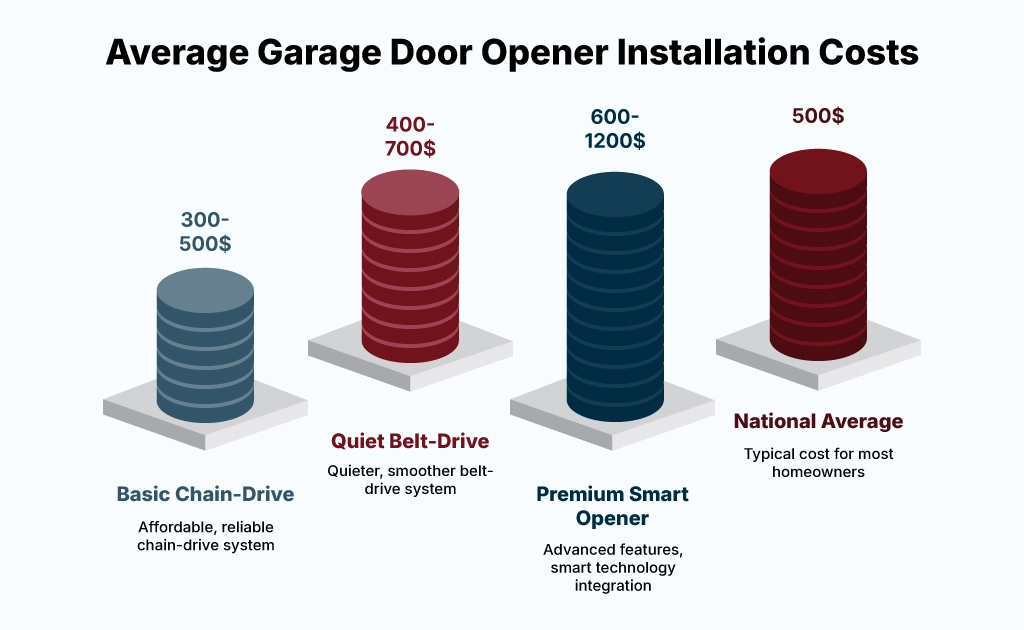
For a basic chain-drive opener with professional installation, you’re looking at roughly $300 to $500. If you want something quieter, like a belt-drive system, expect to pay between $400 and $700. The premium smart openers with all the bells and whistles can push your total cost into the $600 to $1,200 range.
Here’s where it gets a bit tricky – there’s actually a meaningful difference between new installation and replacement costs. If you’re replacing an existing opener, the job is generally more straightforward since the electrical work and mounting brackets are likely already in place. A replacement might save you $50 to $100 compared to a completely new installation where everything needs to be set up from scratch.
The national average seems to hover around $500 for most homeowners, but I’ve seen quite a bit of regional variation. Areas with higher labor costs tend to push that average up, while more rural areas might come in below the national average.
Garage Door Opener Installation Cost Breakdown: What’s Included?
Understanding what you’re actually paying for helps make sense of the garage door opener price variations you’ll encounter. The breakdown usually falls into several distinct categories, and each contributes to your final cost in different ways.
The opener unit itself typically represents the largest chunk of your expense, usually accounting for 60% to 70% of the total cost. Entry-level units might cost $150 to $250, while high-end models can reach $500 to $800 or more just for the device.
Labor charges are the next significant component, generally ranging from $100 to $300 depending on the complexity of your installation and local labor rates. This covers the actual installation work, electrical connections, garage door opener programming, and testing to ensure everything operates safely.
If you’re replacing an old opener, there’s often a removal fee for the existing unit. Most contractors include this in their quote, but it’s worth asking about since disposal can add $25 to $75 to your total cost.
Don’t forget about accessories! They can add up faster than you might expect. Additional remotes typically cost $25 to $50 each, and keypads run about $30 to $60. If you want smart connectivity features, that might add another $50 to $150 to your project.
Sometimes you’ll need additional hardware or extensions, particularly if your garage has non-standard dimensions. Extension kits, reinforcement brackets, or electrical upgrades can add $50 to $200 to your installation, though these aren’t needed in most standard situations. If you’d like to insulate your garage door for added security and improved performance with your opener, we can provide that option. Please note, insulated garage doors come with an additional cost.
Key Factors That Influence Installation Cost
The cost to install garage door opener systems can swing pretty dramatically based on several key factors, and understanding these can help you budget more accurately for your project.
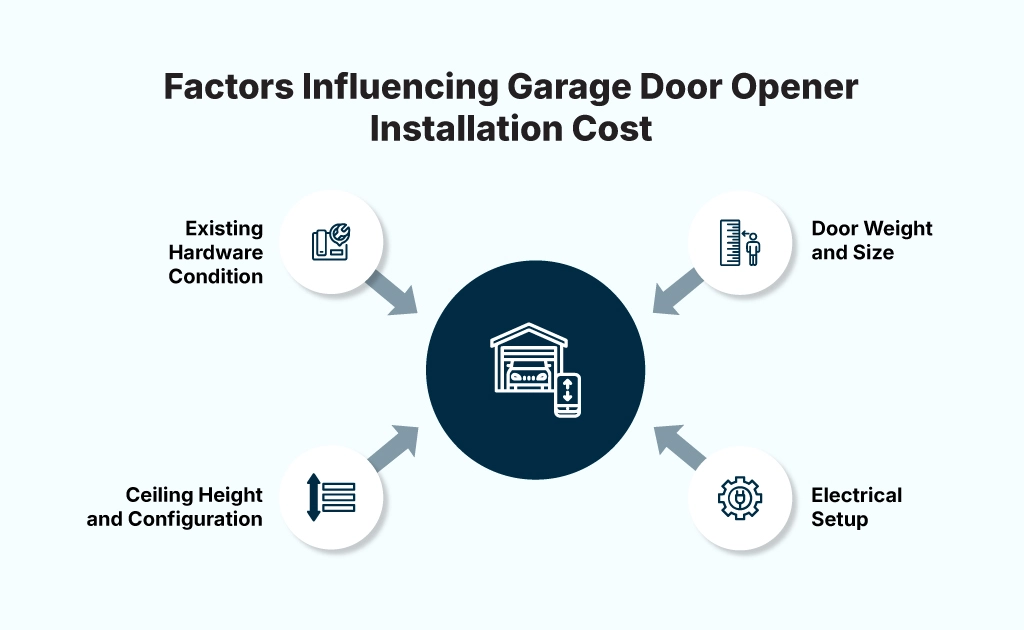
Your garage door’s weight and size probably have the biggest impact on cost. Heavier doors require more powerful motors, and larger doors might need additional hardware. A standard single-car garage door is straightforward, but if you have a heavy wooden door or an oversized opening, expect to pay more for a unit with adequate lifting capacity.
The complexity of your electrical setup matters more than most people realize. If your garage already has a proper outlet near where the opener will be mounted, installation is relatively simple. But if you need new electrical work, running a new circuit or installing GFCI outlets, those costs can add $200 to $500 or more to your project.
Your ceiling height and garage configuration also play a role. Low ceilings, cathedral ceilings, or unusual architectural features might require special mounting hardware that increases both material and labor costs.
The age and condition of your existing garage door hardware can create unexpected costs. If your door needs balancing, spring replacement, or track adjustments before the opener can be safely installed, those garage door repair costs will add to your total investment.
Cost by Garage Door Opener Type
Types of garage door openers each come with their own pricing structure, and the differences are significant enough that your choice might be the most important cost decision you make.
Chain-Drive Garage Door Openers
Chain-drive openers are typically the most budget-friendly option, with units ranging from $150 to $300. These are reliable workhorses that can handle heavy doors, but they’re also the noisiest option. For detached garages or situations where noise isn’t a concern, they offer excellent value.
Belt-Drive Garage Door Openers
Belt-drive systems cost more upfront, usually $200 to $450, but they operate much more quietly. If your garage shares a wall with living spaces or bedrooms, the extra cost is probably worth it for the peace and quiet.
Screw-Drive Garage Door Openers
Screw-drive openers fall somewhere in the middle, typically costing $250 to $400. They’re faster than chain or belt drives and require less maintenance, but they can be sensitive to temperature changes.
Direct-Drive Garage Door Openers
Direct-drive openers are among the quietest options available, but they come with a premium price tag of $350 to $600 or more. The entire motor moves along the rail, which eliminates most noise and reduces maintenance needs.
New Smart openers
Smart openers with Wi-Fi connectivity typically add $100 to $300 to whatever base unit you choose. The convenience factor is significant, being able to check if your garage door is closed from anywhere is genuinely useful, but you’ll pay for that capability.
The garage door opener type comparison often comes down to balancing upfront costs against long-term satisfaction. Quieter units cost more initially but provide better daily experiences, while basic units save money upfront but might become annoying over time if noise is an issue.
Top Garage Door Opener Brands and Their Costs
When it comes to best garage door opener brands, the market has some clear leaders, each with their own pricing tiers. At Northside Garage Door Systems, we work with several top-tier manufacturers that offer different value propositions.
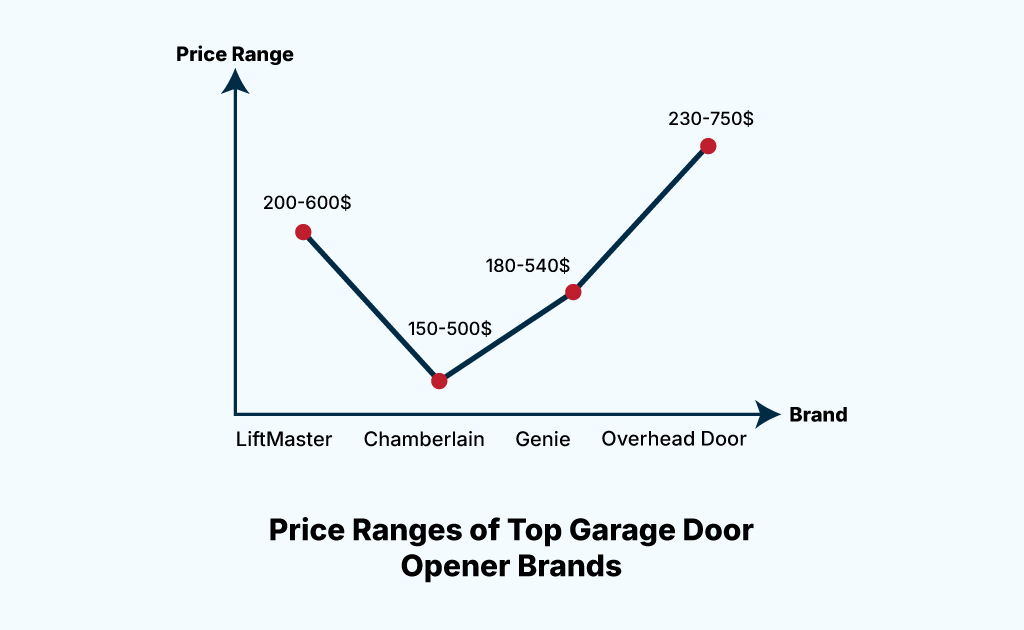
LiftMaster Garage Door Opener
LiftMaster is probably the most recognized name in the industry. Their basic chain-drive units start around $200 to $250, while their premium MyQ smart openers can reach $400 to $600. LiftMaster units are known for reliability and extensive dealer support.
Chamberlain Garage Door Opener
Chamberlain offers similar quality at slightly more competitive pricing. Their entry-level units often cost $50 to $100 less than comparable LiftMaster models, making them attractive for budget-conscious homeowners.
Genie Garage Door Opener
Genie has carved out a strong position in the mid-range market. Their units typically cost 10% to 20% less than LiftMaster equivalents while still offering solid performance and reliability.
Overhead Garage Door Opener
Overhead Door produces some of the most robust commercial-grade units. If you have an unusually heavy garage door or want maximum durability, their units are worth considering despite pricing that’s often 15% to 25% higher than basic alternatives.
What’s interesting is that installation costs don’t vary much between brands – the real differences show up in the unit prices and long-term reliability. Just like garage door openers, both insulated and non-insulated garage doors come with a range of security and performance features. Understanding these options can help you choose the right door and ensure it pairs seamlessly with the right opener.
DIY vs. Professional Installation
The question of DIY garage door opener installation comes up frequently, and I understand the appeal. The potential savings are real, you might save $150 to $300 in labor costs by doing the work yourself. However, there are some important considerations beyond just immediate cost savings.
Garage door opener installation involves electrical work, heavy lifting, and precise adjustments that affect both safety and performance. The springs and cables in garage door systems are under significant tension and can cause serious injury if handled improperly.
Most manufacturer warranties require professional installation to remain valid, which is something many DIYers don’t realize until they need warranty service. The time investment is also significant. What takes a professional 2 to 4 hours might take a homeowner an entire weekend.
For homeowners in our service area, Northside Garage Door Systems offers professional installation that includes proper safety testing, warranty coverage, and ongoing support. You can easily schedule service through our booking page, and we’ll handle everything from start to finish.
That said, if you’re experienced with electrical work and have the necessary tools, DIY installation can be rewarding. Just make sure you’re comfortable with the safety aspects and prepared for the time commitment involved.
Tips on How to Save on Garage Door Opener Installation
Finding cheap garage door opener installation options doesn’t have to mean compromising on quality – it’s more about being strategic with your choices and timing.
Shopping during off-peak seasons can yield significant savings. Most garage door work happens during spring and summer, so scheduling installation during fall or winter might get you better pricing. Some contractors offer 10% to 20% discounts during slower periods.
Bundling services often provides better value than piecemeal purchases. If you need other garage door work, spring replacement, track alignment, or general maintenance, having everything done at once usually costs less than multiple service calls.
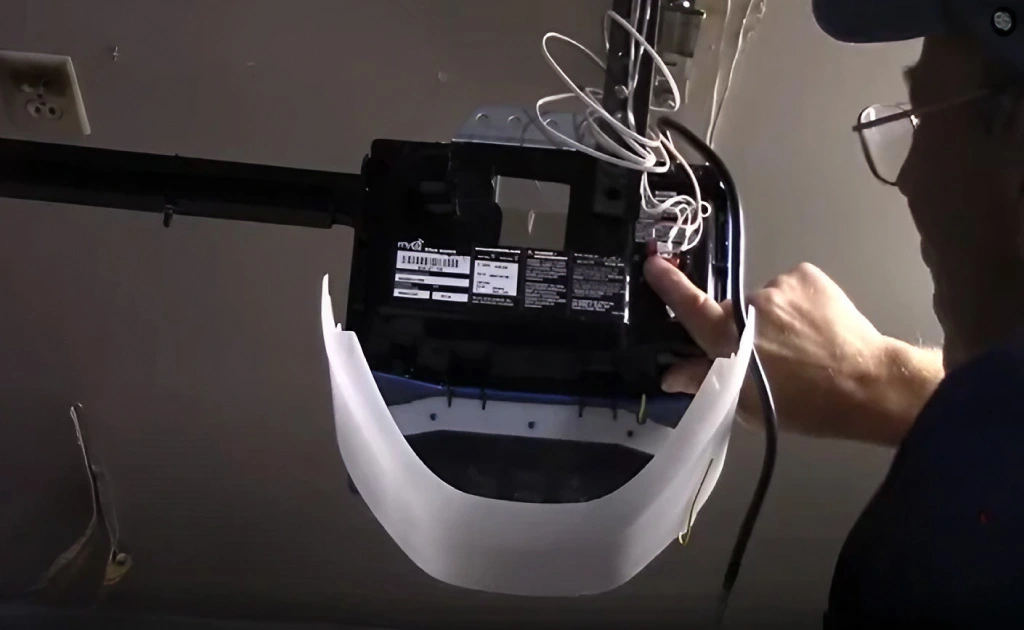
Consider starting with a basic opener and upgrading accessories later. You can always add smart features, additional remotes, or keypads after installation, which spreads out your costs.
Getting multiple quotes is essential, but don’t automatically choose the lowest bid. Look for quotes that are reasonably close to each other and choose based on reputation and included services rather than just price.
Manufacturer rebates and promotions can provide substantial savings if you time your purchase right. Major brands often run seasonal promotions that can save you $50 to $150.
Planning for garage door opener installation cost requires balancing several factors that go well beyond just the sticker price of the unit itself. The most satisfied customers are those who focus on long-term value rather than just upfront savings.
The investment typically ranges from $300 to $800 for most installations, but your specific situation will ultimately determine where you fall in that range. Perhaps more importantly, choosing the right type of opener for your needs often matters more than minor price differences between similar units.
Smart features that seemed premium just a few years ago are becoming standard, which creates both opportunities and challenges for budget-conscious homeowners. The good news is that even basic modern openers include safety features that make them better than premium units from a decade ago.
Whether you choose professional installation or tackle the project yourself, prioritizing safety and proper setup will save you money and frustration in the long run.
Frequently Asked Questions (FAQs)
How does a garage door opener work?
A garage door opener uses a motorized system to lift and lower your garage door automatically. The motor connects to your door through a rail-mounted trolley system that's activated by remote control, wall switch, or smartphone app. When you press the button, the motor engages and either pulls the door open using a chain, belt, or screw mechanism. Modern systems include safety features like automatic reverse if they detect obstacles.
How much does a garage door opener cost?
The price of a garage door opener itself typically ranges from $150 to $800, depending on the type and features. Basic chain-drive units are the most affordable, while quiet belt-drive or smart openers with Wi-Fi can cost more. On average, most homeowners spend about $300 to $500 for a reliable unit.
What is the cost of a garage door opener?
The cost of a garage door opener alone usually makes up 60% to 70% of the total installation expense. Entry-level units start around $150, mid-range models run $250–$400, and high-end or smart openers can cost $500–$800 or more. The right choice depends on your garage door’s weight, noise preferences, and desired features.
How long do garage door openers last?
Most garage door openers last between 10 to 15 years with regular use and proper maintenance, though this can vary based on usage frequency and environmental conditions. Units used multiple times daily might wear out faster, while those used less frequently could last 20 years or more. Belt-drive units often last longer than chain-drive systems because they have fewer wear points.
What size garage door opener do I need?
Garage door opener size is determined by your door's weight rather than garage dimensions. Standard single-car garage doors typically weigh 130 to 200 pounds and require a 1/2 horsepower opener, while double-car doors weighing 200 to 400 pounds usually need 3/4 horsepower units. Heavier doors – solid wood or oversized custom doors – might require 1 horsepower or stronger motors.
How much to install a garage door opener?
Professional installation usually costs $100 to $300 in labor fees, depending on your location and the complexity of your garage setup. When you add in the opener unit itself, the total installation generally falls between $300 and $800 for most homes.
How much does garage door opener installation cost?
The national average cost for garage door opener installation is about $500. Replacing an old opener is often cheaper since the brackets and wiring are already in place, while installing a brand-new system can add $50–$100 more. Premium smart models with advanced features may push costs closer to $1,200.
How much to install a new garage door opener?
For a brand-new installation (where no opener previously existed), costs are a bit higher because of additional electrical work or hardware. You can expect to pay around $400 to $900 total, depending on the opener type, labor rates, and any extra accessories you add.
Conclusion
Planning for garage door opener installation cost requires balancing several factors that go well beyond just the sticker price of the unit itself. The most satisfied customers are those who focus on long-term value rather than just upfront savings.
The investment typically ranges from $300 to $800 for most installations, but your specific situation will ultimately determine where you fall in that range. Perhaps more importantly, choosing the right type of opener for your needs often matters more than minor price differences between similar units.
Smart features that seemed premium just a few years ago are becoming standard, which creates both opportunities and challenges for budget-conscious homeowners. The good news is that even basic modern openers include safety features that make them better than premium units from a decade ago.
Whether you choose professional installation or tackle the project yourself, prioritizing safety and proper setup will save you money and frustration in the long run.

